Truth to tell, prior to departure, I did have some trepidation to the length of time we’d be spending on a local island, and that we’d be staying in a guest house. The touristy private island resorts, where we’d be spending the subsequent four days at, are what most guests to the islands will instagram about. But these local islands are where visitors to the Maldives would be able to come closer to how the Maldivians live and work, short of getting a very special permit to visit the other local islands that do not normally permit guests at all. But if we chose the wrong guest house or local island, we’d be pretty much stuck unless we change accommodations quick. There would have been options for the latter such of course, since this was the low season: we’d just need to suck up the costs involved.
Either way, I kept my expectations modest: we’ve been to several island resorts elsewhere in Asia that are are also hosted on working and resident islands at this point, and there are significant differences to what you see in front and behind the gate and wall. Huraa is indeed pretty much like this: the locals do try their best to keep the general area clean. But the major development going on around the island by way of construction of new private dwellings, and also a massive amount of reclamation going on at the east side of the island – where The Sunrise Huraa is located – showed, with construction equipment in several areas, presence of building materials, opened-up grounds for cabling work and so on. None of these finally bothered us too much: because if it does, you’d really be better off staying in the walled-off exclusive resorts as the local islands really aren’t for you then.
Sameer, the owner and our host during our stay on Huraa island, shared on our night of arrival that there are just 1,200 inhabitants on the island. An article I read elsewhere noted that the population in 2016 was 750. I’m not sure which number, including ones in between those two, is more accurate – but the island at no point felt congested. It was low season, true: but that would largely contribute towards the very few other visitors we encounter over the seven days, and perhaps a portion of the guest service industry (as in they might be working in other occupations when they do not have bookings at their guest houses). The locals were all invariably polite and would frequently say hi to us when we walked past – something that Singaporeans normally do not do, mind you, so we gladly reciprocated their greetings.
There are numerous other signs that we were living among locals too. For instance, our guest house is situated several meters from their island mosque, and calls to prayers ran every several hours – a reminder that the Maldivians are deeply religious, and guests to their islands need to be respectful of that. Or the morning routines I observed when I did my two early morning sojourns to photograph the morning sunrise – the islanders cycling to work at the walled off Pearl Sands of Maldives resort on the northern tip of the Huraa. Or the locals sweeping sand off their dwelling exteriors. Or other even early morning risers who have been up doing cardiovascular workouts at the Soccer field.
There were also signs of the small service industry too. Sameer shared that there were about eight guest houses, including his, currently on the island – and I expect more to come up once the reclamation project completes. There are perhaps a dozen shops on the island too which serve both guests and locals, and offering snack foods, toiletries, apparel, and snorkeling gear. Accompanying that are half a dozen small cafes, many of whom offer a range of cuisine: including local (mee and nasi gorengs), Italian (pastas and pizzas), Western (e.g. burgers, sandwiches) and also selected Asian (e.g. curries). The items you order can take a while to prepare though: a waiting time of 45 minutes after we place our dinner orders is common, and this was during off-peak season where we were frequently the only diners in the cafe. Main courses are routinely between 60 to 180 MYR, so reasonably priced for the quality of cooking – which was always savory and tasty.
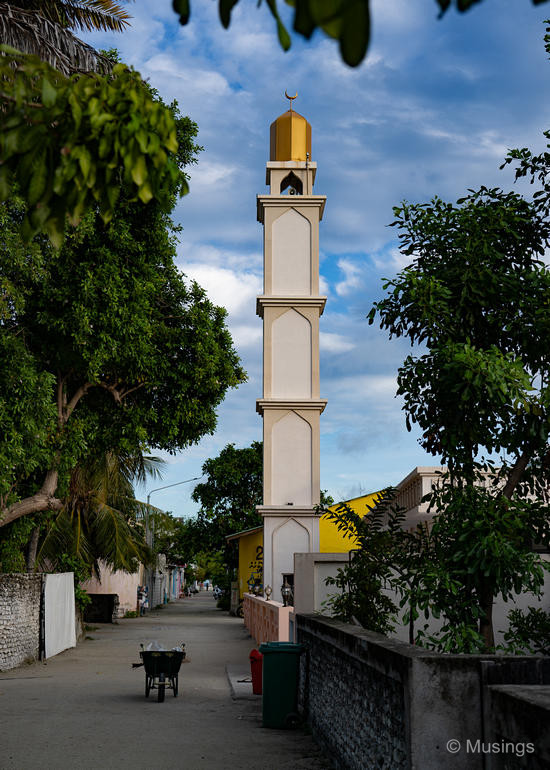
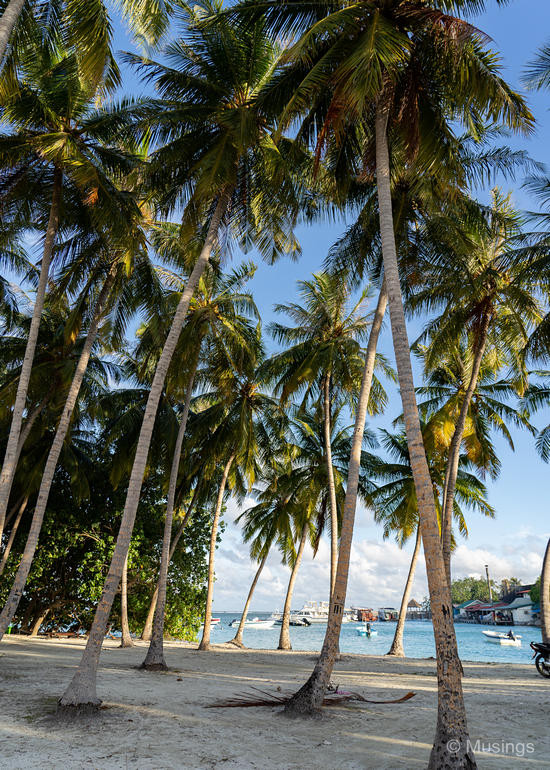
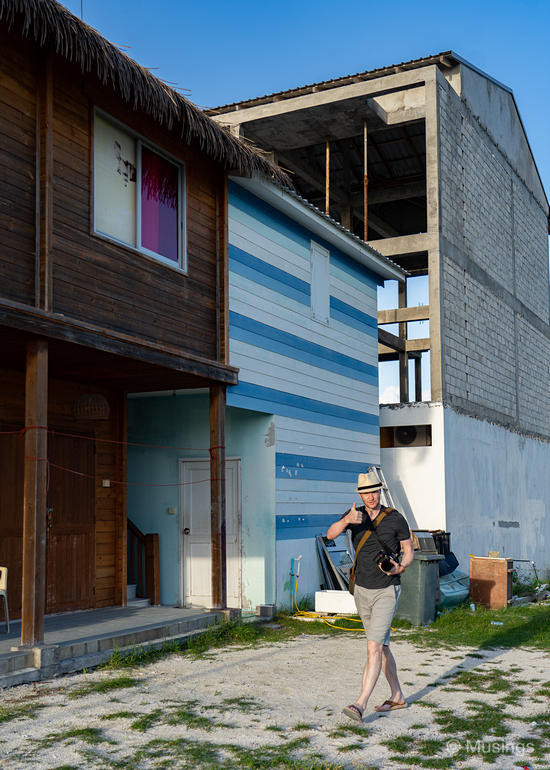
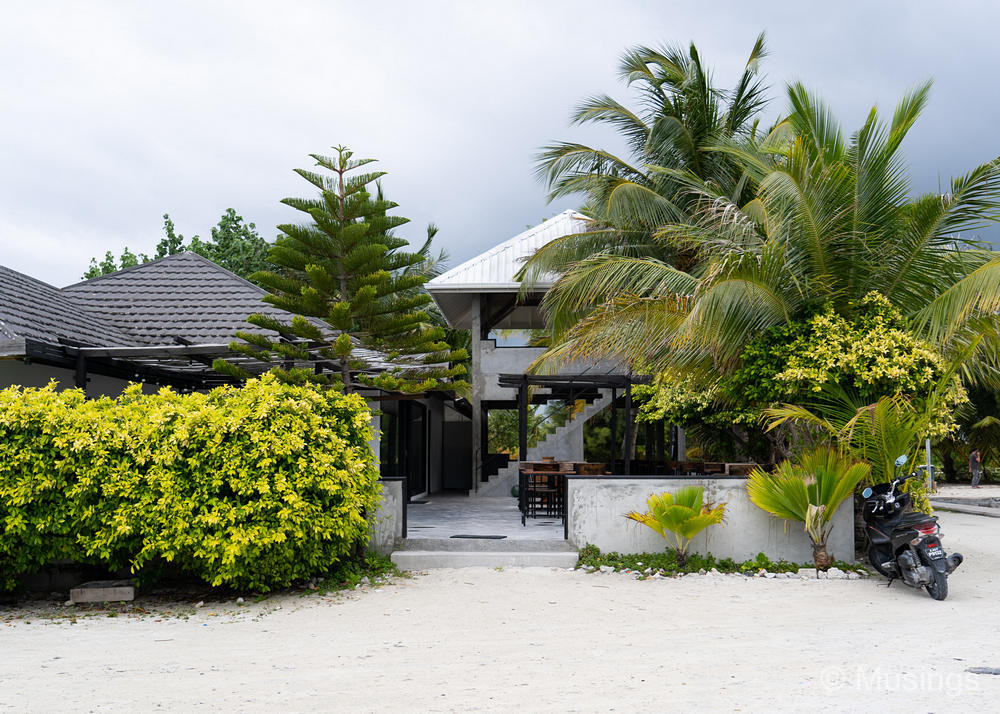
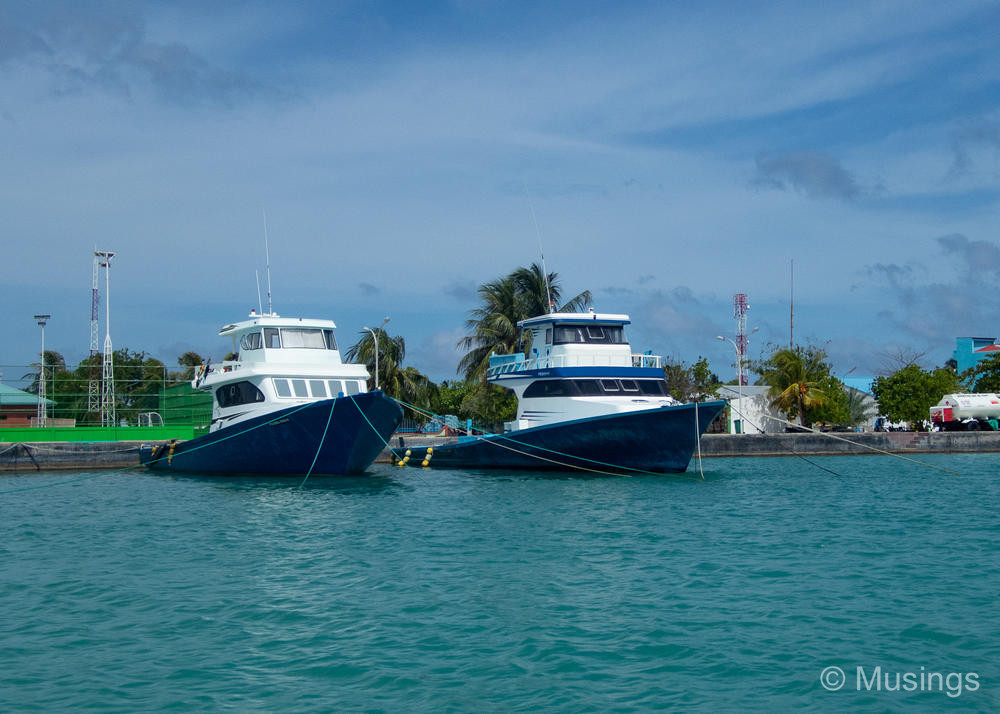
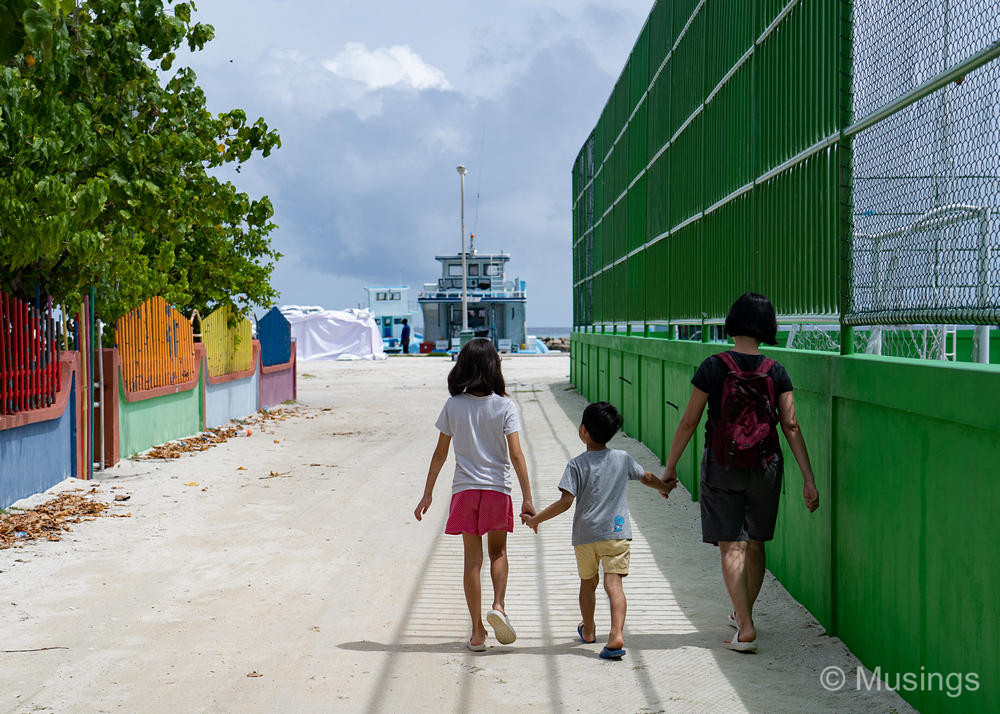
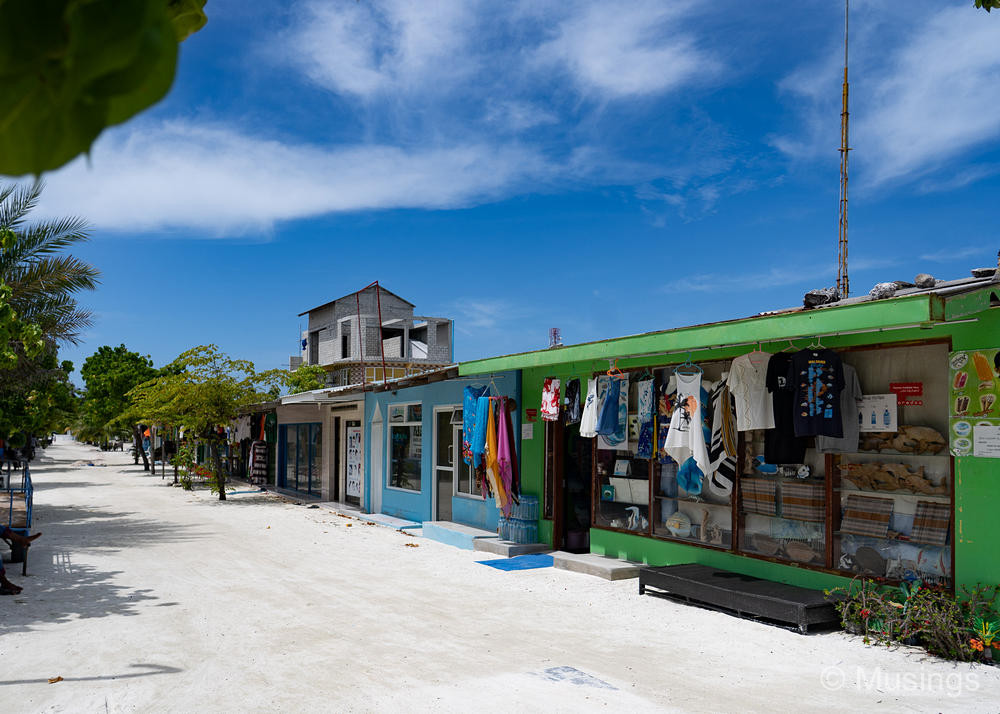
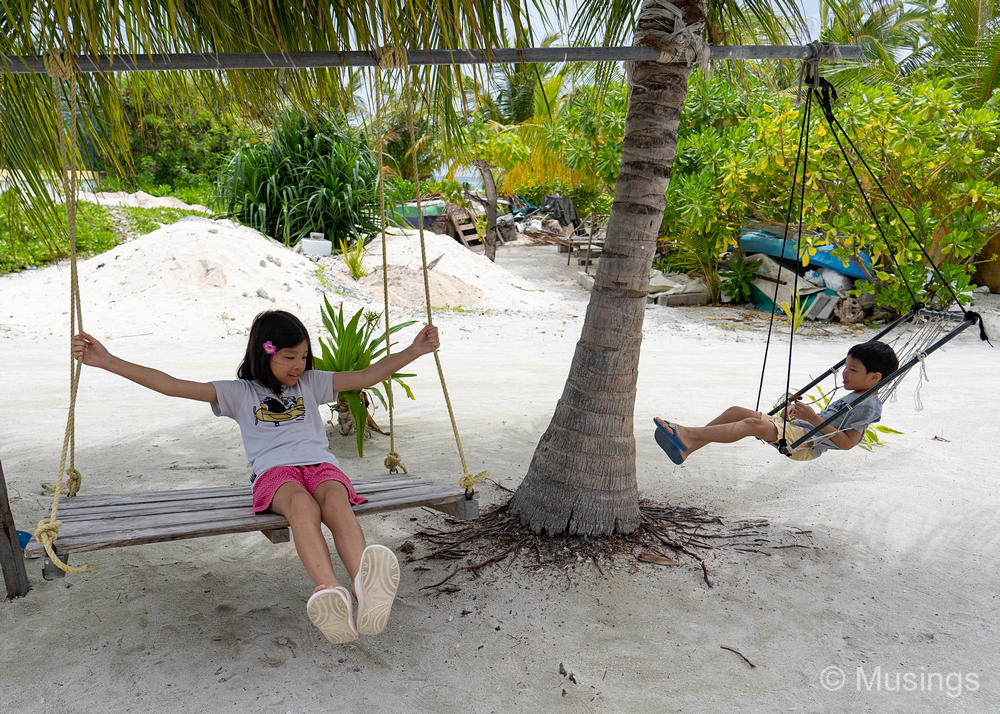
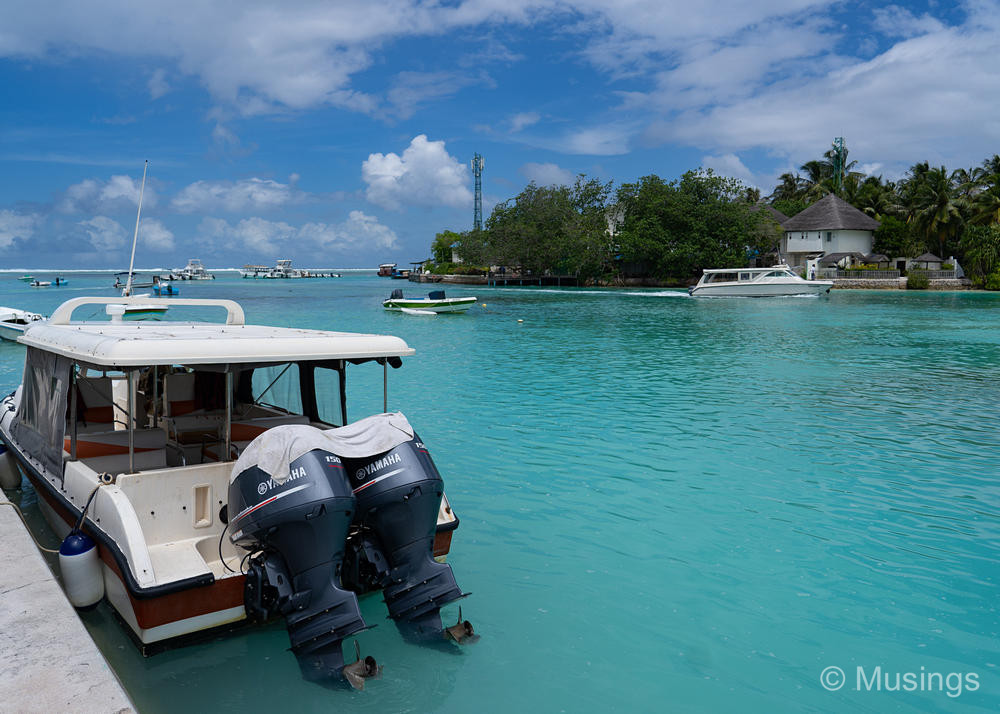
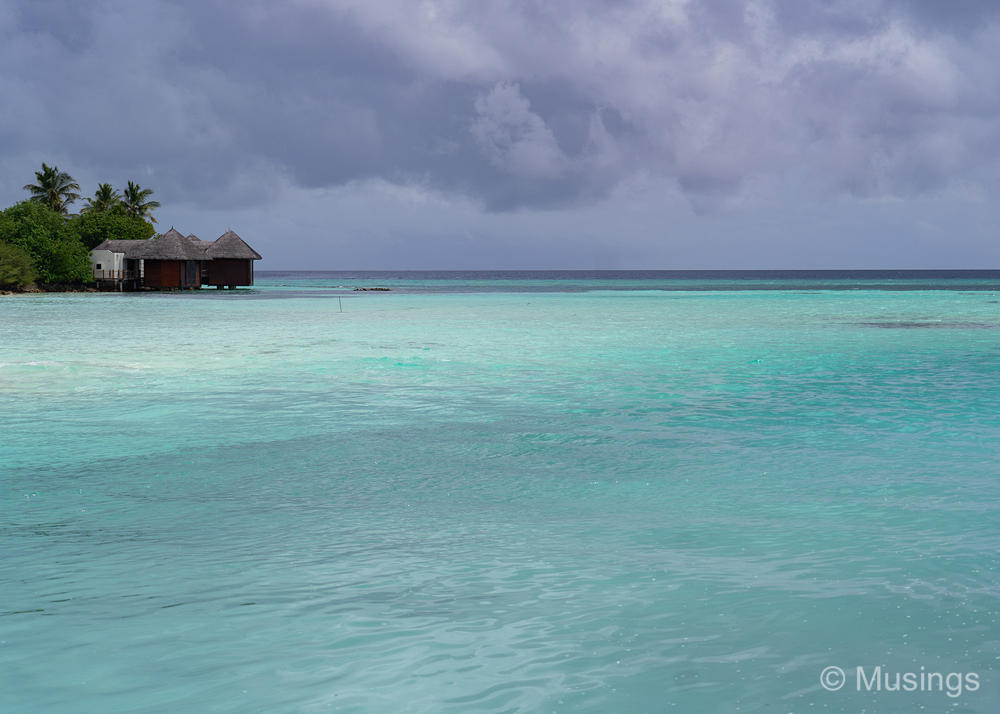
In all; we can’t do an head to head comparison on how Huraa compares to the other local islands in the Maldives, since this is the only one we spent a substantial amount of time in. But this we can say though: if you’re limited in the length of time you can spend in a Maldivian holiday, then I reckon a stay at the exclusive resorts will easily net you the kind of photographs you’ll want to bring home, and with little effort. But if you have more than just a few days to spend, then I’d very highly recommend a stay on a local island. Aside from experiencing and witnessing a closer representation of the real Maldives, you’ll save loads of cash too on accommodation and dining at least.
Onto the next segment of our stay @ Olhuveli!
Recent comments